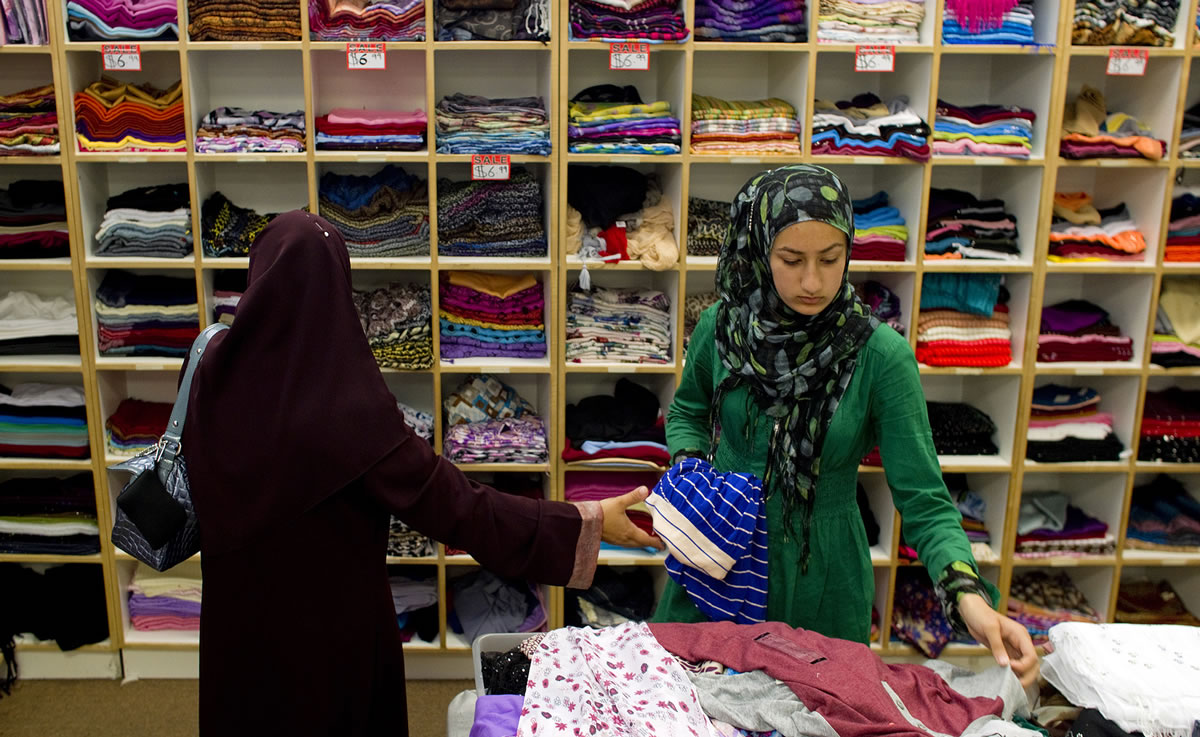Islamic clothing is getting a bit more hip.
Southern California, home to one of the largest Muslim communities in the nation, has become fertile ground for a new generation of designers crafting clothes for women who are limited by faith and conviction from flashing too much skin.
Although Muslim women have been dressing fashionably for years, many in the U.S. say they still face tricky challenges when getting dressed — and especially dressed up.
“We are Muslim and we can still express ourselves, be fashionable, as long as we do it in a halal way” or in keeping with Islamic law, said LaTanya Maassarani, 30, a postal carrier from Long Beach, Calif. “But unless you have lots of money or lots of time to shop, it’s been hard for years to find clothes in America that aren’t dowdy.”
Filling that void now are designers such as Afra Said-Ahmed and her sister Eiman Ahmed, both Muslims, who launched Irvine, Calif., clothing company Mohajababes. The name is a mash-up of the words “babe” and “Muhajiba,” or one who wears a hijab scarf.
“Trying to conform to Muslim dress codes, you get stuck in a rut of black, black, black all the time,” said Ahmed, 26. “It’s definitely very difficult, especially in the U.S. You want to fit in, but still be appropriately dressed.”
So she and her sister scraped together $2,000 and began selling caftans and rhinestone accessories for head scarves at the end of 2011. The line is modest – caftans sweep the floor and hang loosely on the body. Yet the jewel-colored clothing comes with feminine frills such as silky fabrics and metallic embroidery.
Said-Ahmed said their goal was to dress fashion-conscious shoppers who are faithful to Islamic mandates but want nothing to do with traditional black coverings such as abayas and burkas, which are too hot for the California sun.
“There is a huge market here for Muslims who can’t access clothing like this,” she said. “People were saying, ‘Oh my God, that’s amazing. I have been looking everywhere for this.’ “
Designers are opening stores, showing off wares at conventions and sending models down runways. They’re hoping to make serious money: Southern California has a ready pool of more than half a million Muslims, said Munira Syeda, spokeswoman at the Council of Islamic-American Relations.
Muslim Americans say the new designers make getting dressed in the morning – and avoiding stares from people nervous about anyone who looks remotely Middle Eastern – much easier.
Amira Mertaban, 21, said young Muslim women like herself now have the confidence to remain true to Islam. Even a few years ago, she said, women who didn’t want to look dour resorted to layering miniskirts on top of jeans.
“If a non-Muslim looks at you, it obviously makes them more comfortable if they don’t see the standard black that they see in the news all the time,” the Chino Hills, Calif., college student said as she proudly showed off her pale pink hijab, striped maxi dress and stylish Marc Jacobs glasses. “Fashion has given Muslims a sense of relief.”
Aside from the challenges of running a small business, designers churning out Muslim clothing must navigate tricky cultural norms and interpretations of Islamic law. Some conservative, older members of Muslim communities — and even younger members — frown upon anything brightly colored or remotely flashy, said Anna Secor, a University of Kentucky professor who has studied Islamic fashions.
Secor said Islamic laws mandating modesty are open for wide interpretation. In Saudi Arabia, most women wear abayas and many also cover their hair with hijabs, she said. In Turkey, on the other hand, some young women dress in skintight bodysuits with strappy sundresses on top.
“What exactly is the boundary of modesty is contested, and a lot of people don’t agree,” she said.



